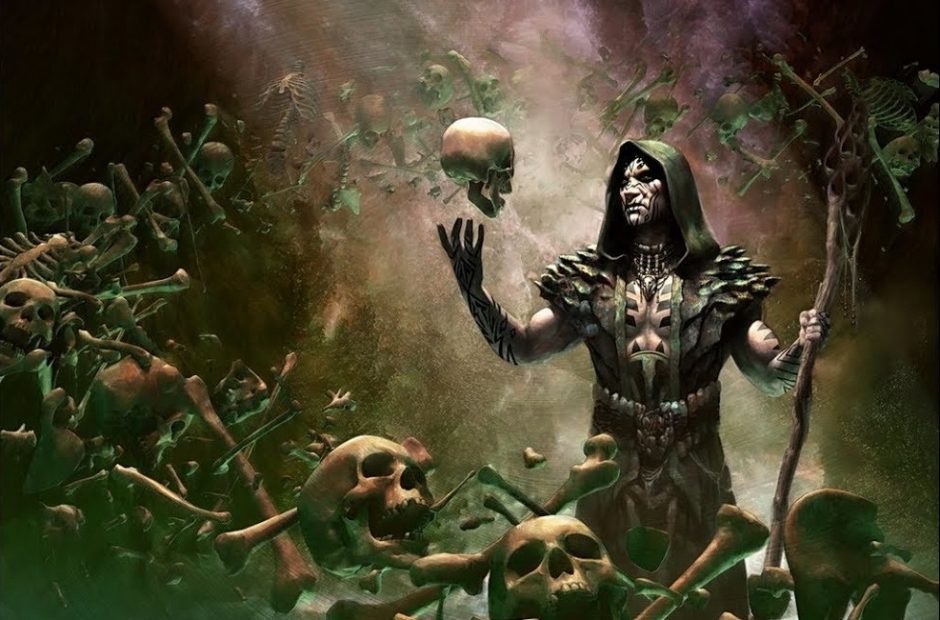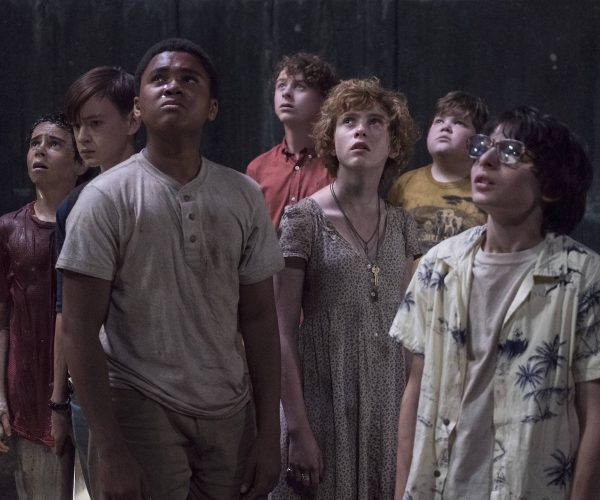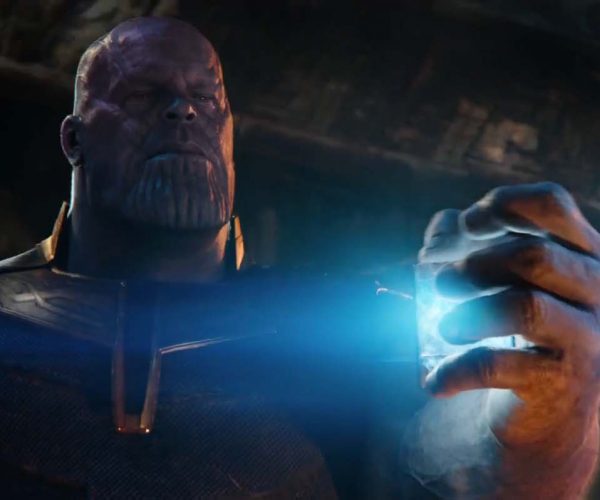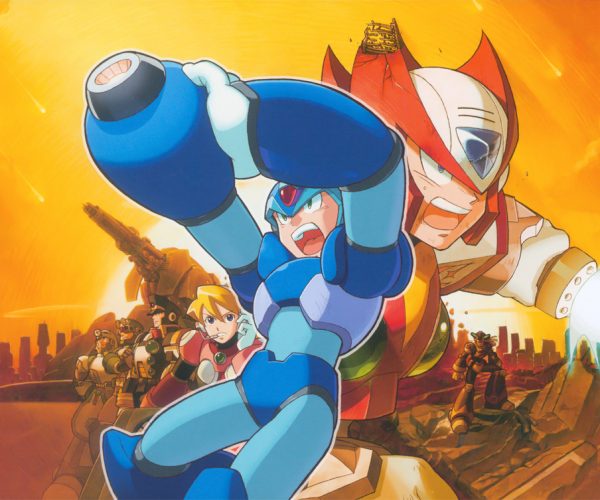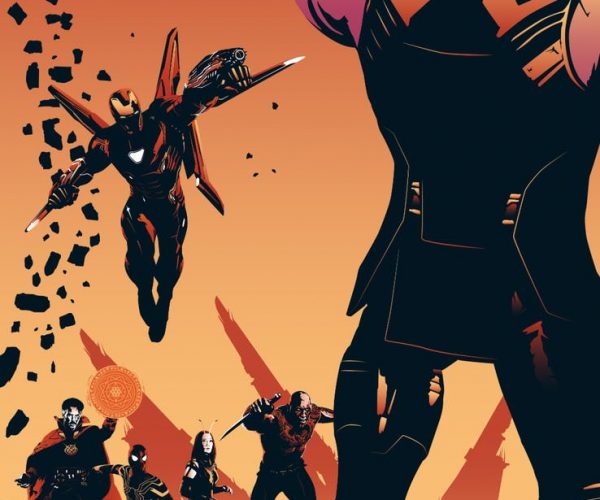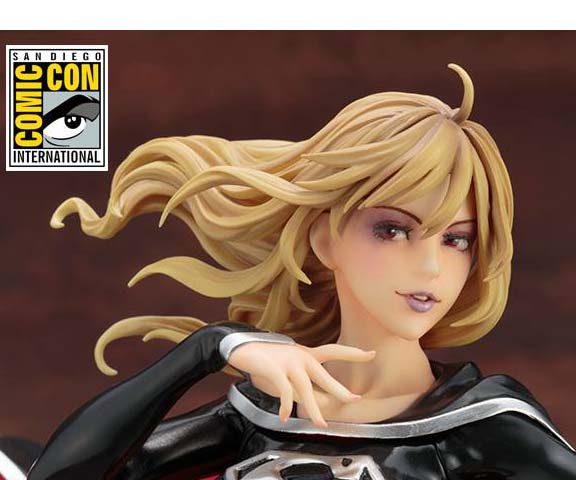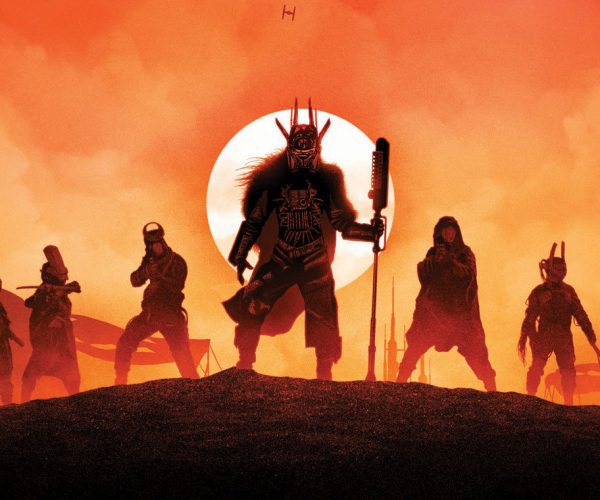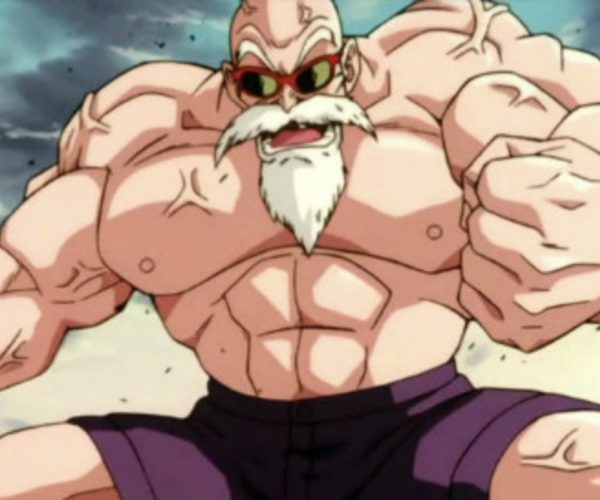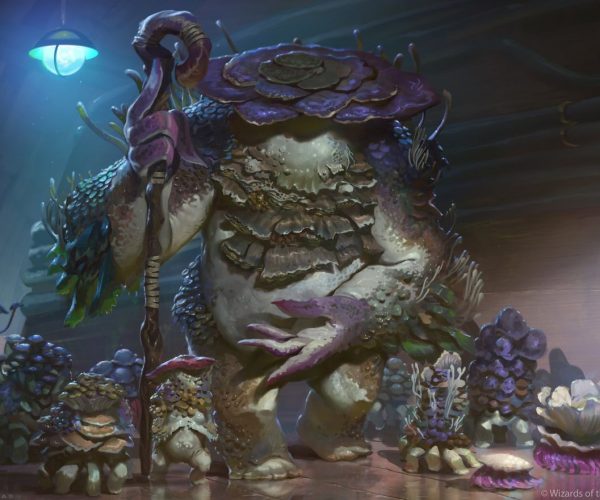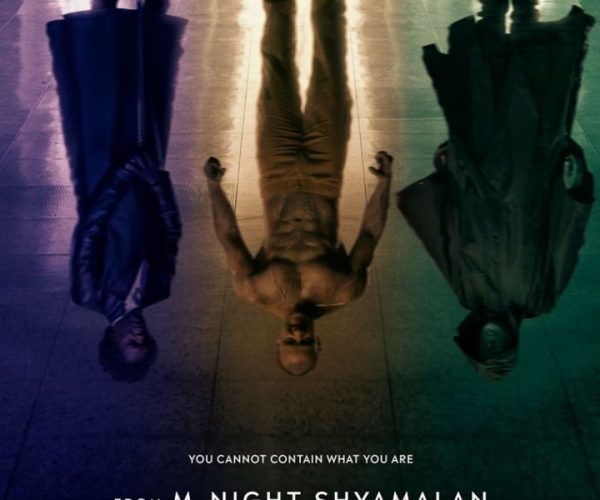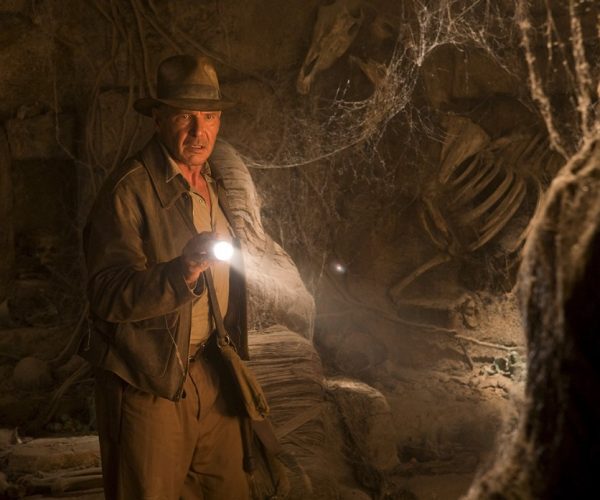Magic: The Gathering’s Core 2019 set will be released on July 13, bringing us into a whole new season of the popular card collecting game. Dozens of exciting cards, as well as a few duds, will be joining the tens of thousands of others already entrenched within Magic’s lore, but this also means that a few overpowered buggars are set to be exiled from the game for a while.
Bans are necessary to ensure the health of the game. Sure, they piss off those who invest in the cards or enjoy using them, but their monetary concerns are minimal compared to the big picture of a healthy competitive scene. There’s been a lot of talk about Standard and Legacy bans as of late, and Wizards of the Coast brought the hammer down hard on two Legacy staples this time around.
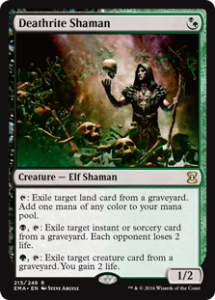
For years, Deathrite Shaman has been dominant at ruining graveyard play, fixing mana bases, and mutating life totals. I’ve heard him described as the most broken “fair” card in Magic’s history, and while he might seem like a measly tree-hugging elf with some lifegain abilities at first glance, like a Tarmogoyf, you never fully appreciate his power until one is sstaring at you across the battlefield.
However, the real reason Wizards of the Coast came down hard on Deathrite Shaman is because the card and those powerful abilities simply appeared in too many decks. The choice between Green and Black mana allows him to appear in Grixis, Jund, and any other relevant color combination that enjoys toying with graveyards, and more specifically, his appearance in the surging Grixis Delver decks caught Wizards’ eye. Eleven of the top sixteen Grixis Delver Legacy decks at GP Birmingham, including five of the top eight, all used four copies of this card, and it boosted the deck to a 55 percent win rate against non-mirror matched decks.
Wizards also cited the loss of variety in blue-based decks and Grixis builds thanks to Deathrite Shaman as a reason for their banning. Decks simply are becoming too efficient, too similar, and frankly, too boring thanks to the ease of casting and using Deathrite Shaman’s ability. Wizards hopes that the banning will inspire variety and probe players into experimenting more.
I’ve only played against him in Legacy elf decks, and since Burn is the only Legacy deck I can possibly afford in my current lifestyle, that lifegain sucks. I would hate to see him used at full force in one of the game’s most powerful decks.
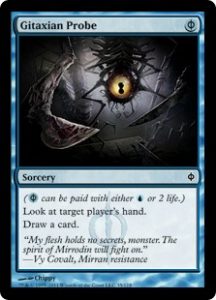
Gitaxian Probe already earned itself a ban in Modern for being too powerful, and its effect on the world of Magic has been so strong that it even landed on the restricted list for Vintage! Not bad for a throwaway common from a set that’s nearing a decade old.
Once again, like Deathrite Shaman, this card is the glue that holds together a solid Grixis Delver deck, and it also appears in Ad Nauseam Tendrils, another common Legacy deck I’m less familiar with.
The problem is Phyrexian mana, which allows almost any card to be cast for free, so long as you give up 2 life. In traditional Magic, protecting your life total is a must, but in formats like Legacy and Modern, which look to cheat the rules and win in absurd ways, life total doesn’t have as much meaning anymore. 2 life is pennies when you get all of the effects attached to this card. Drawing a card is easily worth 2 life, and looking at your opponent’s hand is like an added bonus on top.
However, in Grixis Delver, this card adds ammunition for the delve mechanic into your graveyard for free, and it immediately replaces itself with another cheap cantrip with your mana completely untouched. Gitaxian Probe boosts the chances you’ll be able to flip your Delver of Secrets on turn-2. It draws you you win condition for free after you Ponder or Brainstorm it to the top. It does everything the deck needs to win, and does it for the cost of 2 meaningless life points.
Yup, it’s a fun, broken card, but it has to go.
Now onto something I’m a bit more qualified to talk about: Standard. Legacy is still a format I’ve merely toyed with, never gotten into fully.
In Standard, meaning the most recent cards dating back to 2016’s Kaladesh set, players have been upset about the appearance of a single Goblin card which has laid to waste the entire metagame.
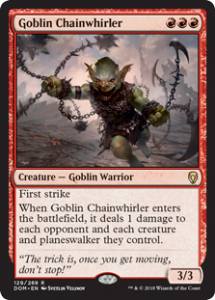
Goblin Chainwhirler is part of a cycle of rare, three-drop mono-mana creatures that came out in Dominaria earlier this year. It’s the same cycle that sported my homeboy Steel Leaf Champion. Plenty of players were hankering for this pipsqueak to be sent to the chopping block, but Wizards of the Coast decided to spare him for a little while longer and see how a Standard rotation affects him.
The obvious problem with Goblin Chainwhirler is that he negates entire decks revolving around one-toughness creatures. 3/3 first strike for three mana is a good deal already, but the added ability to wipe the board clean of Merfolk, Vampires, Sapprolings, Wizards, and other weaker creatures creates a metagame in which a handful of exciting decks simply aren’t viable.
Not just token decks either. Big, bad mono-Green stompy decks couldn’t even stand up to Chainwhirler because he would wipe the board of the all-time power engine, Llanowar Elves. The Green monsters could easily crush the goblin on the spot if they eventually come down, but without the ramp from Llanowar Elves, the aggressive support around Chainwhirler will have already closed out the game!
Given the power of Chainwhirler’s “enter the battlefield” ability, the 3/3 first strike creature is actually the added bonus! That’s how powerful 1 damage to everything is in the current metagame.
However, Wizards decided not to ban Chainwhirler for a good reason. The card is essentially a reward for players who dedicate themselves to a single color. Having to use three mountains to bring down the Chainwhirler consistently means you’ll be unable, or at least incredibly restricted, to use any other colors.
The belief is that Chainwhirler only excels in a metagame where Mono-Red decks are already powerful, and if you haven’t noticed, Mono-Red has been running all over Magic for the past two years! Chainwhirler itself isn’t the powerhouse of the deck, but his added ability made a deck that was already powerful even more powerful by crippling the competition.
Thankfully, that Mono-Red deck won’t be around much longer. Wizards of the Coast claims that because many of the cards that boosted Chainwhirler into power will soon be rotating out of Standard, it doesn’t deserve a ban on its own just yet.
Standard’s most powerful card, Hazoret the Fervent, no longer will be able to close out games with a mere draw, and Glorybringer won’t slam into players and their best creature from out of nowhere anymore. Chandra, Torch of Defiance, the best Planeswalker in years, is out. Earthshaker Khenra, Kari Zev, Skyship Raider, and Ahn-Crop Crasher won’t be around to mess up your blocks.
Abrade is rotating out, making artifacts just a little safer in the world, and Scrapheap Scrounger will finally be put to rest forever. Bomat Courier is gone, limiting Red’s dangerous card advantage. Even Chainwhirler’s best friend (and one of my favorite cards) Soul-Scar Mage will no longer turn all those points of damage into permanent -1/-1 counters.
Simply put, Wizards is convinced that Mono-Red will lose enough power to no longer be a viable deck post-rotation, and the incentive to no longer play a free Chainwhirler will be gone with it. This won’t eliminate Chainwhirler entirely, but he will turn up less frequently in competitions. With less presence on the battlefield, token decks and Llanowar Elves should be safe enough to fill their roles.
Solid logic, and Wizards also points out that the win percentage really isn’t all that high for any deck that Chainwhirler appears in. He’s lucky there is a rotation just around the corner though because two more years of Mono-Red and a limited number of ways to counter it would be quite aggravating.
